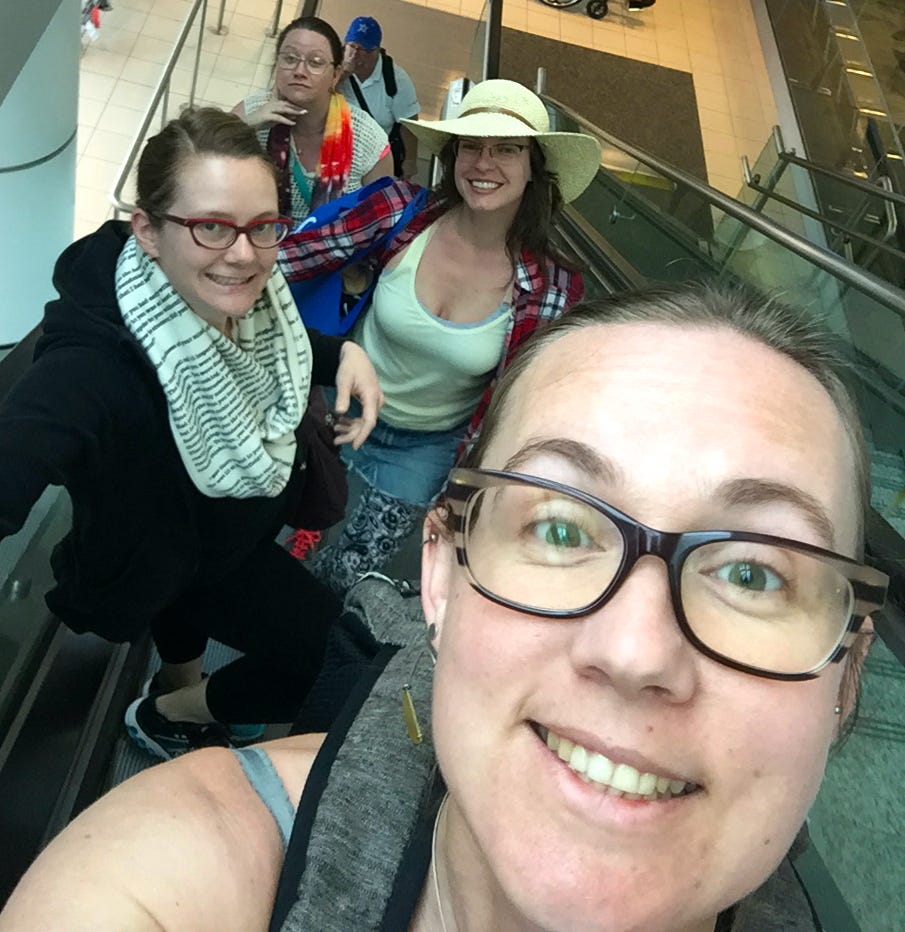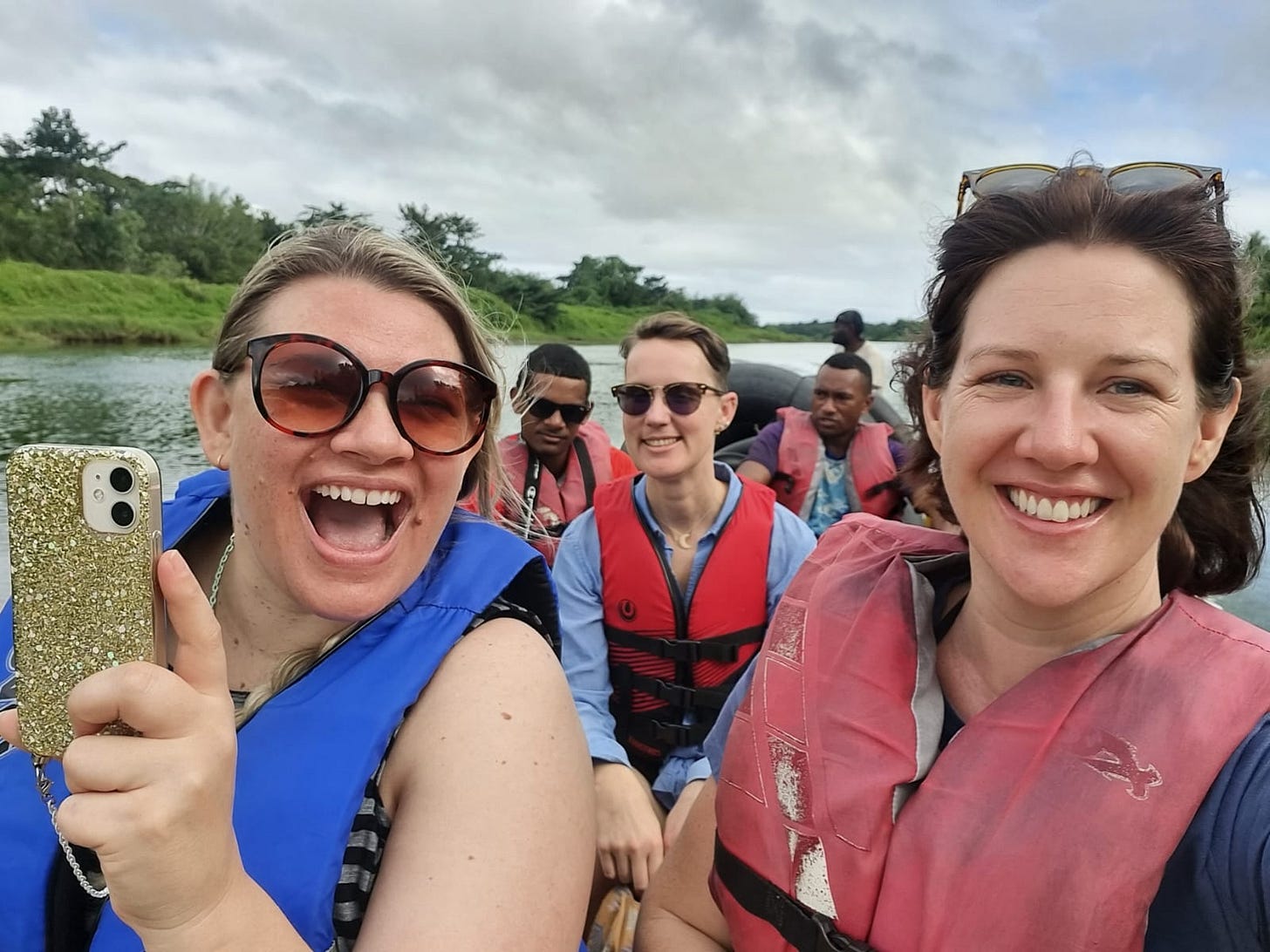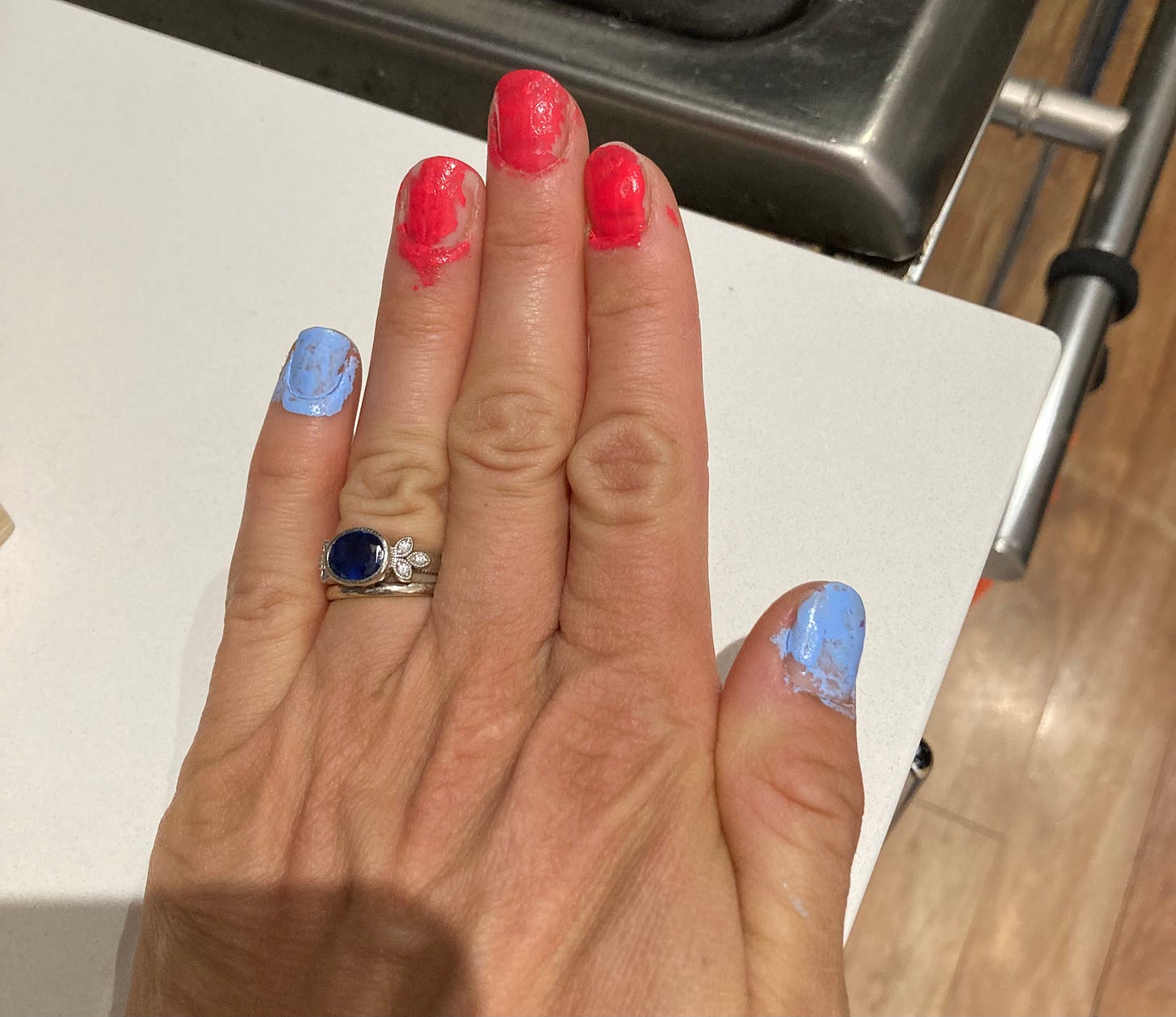I’m just back from traveling with friends, so I have lots of thoughts on the magic and challenge of such a trip! Hannah, Lala, and I live on three different continents, and before the pandemic, we traveled to meet up somewhere in the world at least once a year. Hannah’s working in Fiji this season, so we used that as the excuse to see each other and visit some gorgeous beaches together.
Whether it is an overnight getaway, camping trip, road trip, or grand adventure, a trip with friends takes communication, honesty, and negotiation for it to go well.
Adding people adds complexity
Most of the people we met at the tourist spots were families or couples. There were a few solo travelers but very few pairs or groups that seemed to be friends traveling together. During a discussion around a communal dining table, the four solo travelers lamented not having friends to join them in their travels. Inwardly, I suspected they probably did have friends at home that they might travel with, but I also knew it’s a big risk and an act of vulnerability to ask someone to go on an adventure with you. There can be a lot of money tied up in a trip, a lot of intimate time together, and a lot of potentially stressful situations where you’re not your best. Of course, there’s also a huge potential reward, not the least the opportunity to deepen and strengthen your relationship by adding adventure, playfulness, newness, and deep conversation into the mix.
Traveling alone has a kind of relational simplicity. There is the ease of making all decisions for yourself and the thrill of cruising for friends along the way. But if your new travel friend from the hostel or tour group wants to do something different than you, you can easily part ways and make your own decisions without compromise. There’s low or no commitment to the relationship. Traveling with friends is truly a step into deeper relationship with them.

Practice voicing personal preference
That’s not to say that traveling with friends means you’re always beholden to the group. My experiences traveling with a romantic partner and family tended to default to ‘do everything together the whole time.’ With friends, I’ve felt freer to do separate activities and come back together to share those experiences later. This allows each person to explore their interests and gives breathing space to the together time. For me, it’s a chance to strengthen the muscle of doing activities on my own. It is also a great opportunity to practice being able to recognize personal preferences and voicing those preferences to others.

Last month, I wrote a recent trip to Savannah. While I had a lot of solo time on the trip, it was also a meet-up with my summer camp friend Christine. She and I started taking trips together when we were single and wanted more ways to stay connected in between one week each summer. After reading the newsletter about Savannah, Christine replied, “It was nice reading your friend newsletter today and getting another glimpse into what can be good about effectively communicating different needs! You got to have a nice experience with new friends at bingo while I got to unwind after a full trip, all because we both knew what we’d enjoy doing and could communicate that clearly!” On the last night of the trip, over dinner, we talked about how we wanted our evening to go, and it was clear we had different desires. While I went to the dive bar bingo, Christine had opted to walk to get ice cream and head back to our rental. Being able to talk about it and let each person do their own thing made for a perfect evening all around.
How to decide
In Fiji, with Hannah and Lala, there were so many options for what we could do each day. Did we want to tube down the river, go to the beach, relax, eat now or later, or both…? We’re all pretty accommodating people (a good quality in travel companions), but that sometimes meant we were all open to everything, which didn’t narrow down the list.
I suggested we use a thumb system for assessing how we really felt.
Thumbs UP = this is something I really want to do, and I would be sad if we didn’t get to
Thumbs SIDEWAYS = I am totally open to that, or I’d go if others want to
Thumbs DOWN = that’s not my jam; I’ll sit it out if you decide to do that

If one was thumbs up and two were sideways, we’d do it. If there were three options and one had one or two thumbs up, we’d choose that activity/restaurant first. The system let us both be flexible in planning and also assert when we had preferences. Giving each person space to say what they really want to do can avert resentment and keep one person from dominating the whole trip.

Show some grace
Part of the risk of traveling with friends is there are many possible situations where people are not at their best. So giving your friends a heads up on your grumpy triggers is super important. After around 10pm, I’m no longer my best self. I get tired, and my brain doesn’t work as well. Once my friends know that, they can plan to be in charge of finding the taxi home or make sure we have time in the afternoon to nap. For other people, not having regular snacks or coffee first thing in the morning, or walking uphill in the sun right after they’ve showered, might trigger their grumpiness.
If you don’t say why you’re grumpy or don’t assess why you’re annoyed, it creates a potential tinderbox for unproductive arguments or hurt feelings. Talking openly and ahead of time about when you might be snippy can allow your friends to understand what’s going on, show you some grace and help you get your needs met. Having friends love you through the grumpy can be a beautiful moment of friendship growth.
What friend might you invite to travel with you? If you’ve traveled with friends, what were the pain points and joys? What are your grumpy triggers, and have you told your friends about them?
Pro-Friendship Tip:
While you’re away, send a postcard to your friends back home! Unlike a holiday card, a postcard is unexpected and a perfect way to let them know you’re thinking of them. Plus, everyone loves getting mail. Just make sure you have their addresses in your phone so it can be a surprise.
Yay Friends Moment of the Week:
After my post about friend-endings mentioned the value of having text-triggers that prompt you to keep in touch, my friend Sarah and I started sending pics whenever we did our nails. It’s a tiny way to stay connected and it means that I text her about once every 7-10 days. This week, her little one gave her a fancy manicure!






Love this article and Tanya's writing. I travel frequently, and as a single person, I always travel with a friend or sister. My criteria for good traveling companions are people who have a positive attitude, can be flexible, enjoy seeing new sights and doing new things, can make decisions without analyzing everything to death, or putting off decisions because they can’t make up their mind. People who aren’t flexible and have to have their own way aren’t on my list of people I want to travel with. I'd say these characteristics are who I am too.